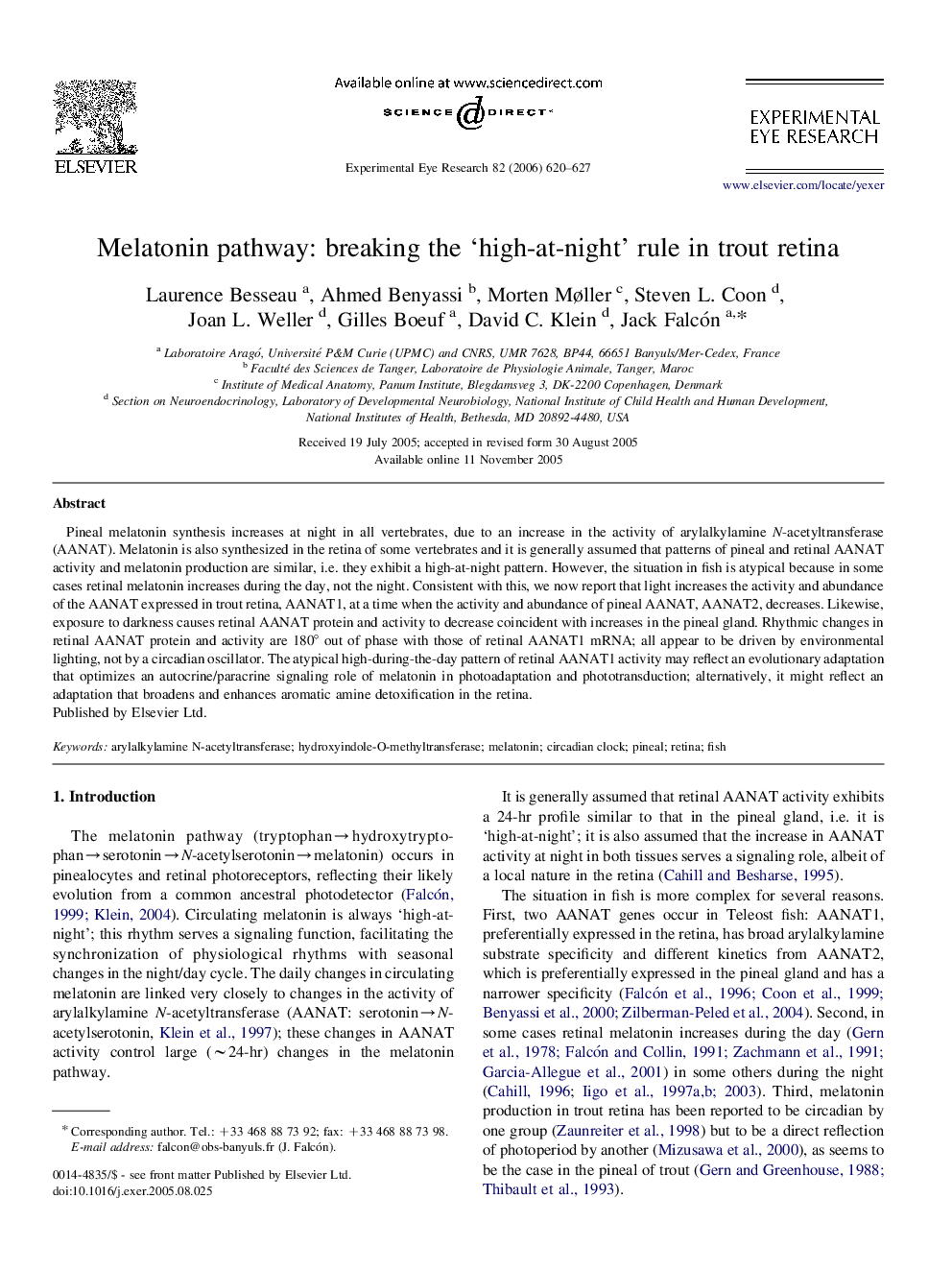| Article ID | Journal | Published Year | Pages | File Type |
|---|---|---|---|---|
| 4012607 | Experimental Eye Research | 2006 | 8 Pages |
Pineal melatonin synthesis increases at night in all vertebrates, due to an increase in the activity of arylalkylamine N-acetyltransferase (AANAT). Melatonin is also synthesized in the retina of some vertebrates and it is generally assumed that patterns of pineal and retinal AANAT activity and melatonin production are similar, i.e. they exhibit a high-at-night pattern. However, the situation in fish is atypical because in some cases retinal melatonin increases during the day, not the night. Consistent with this, we now report that light increases the activity and abundance of the AANAT expressed in trout retina, AANAT1, at a time when the activity and abundance of pineal AANAT, AANAT2, decreases. Likewise, exposure to darkness causes retinal AANAT protein and activity to decrease coincident with increases in the pineal gland. Rhythmic changes in retinal AANAT protein and activity are 180° out of phase with those of retinal AANAT1 mRNA; all appear to be driven by environmental lighting, not by a circadian oscillator. The atypical high-during-the-day pattern of retinal AANAT1 activity may reflect an evolutionary adaptation that optimizes an autocrine/paracrine signaling role of melatonin in photoadaptation and phototransduction; alternatively, it might reflect an adaptation that broadens and enhances aromatic amine detoxification in the retina.
